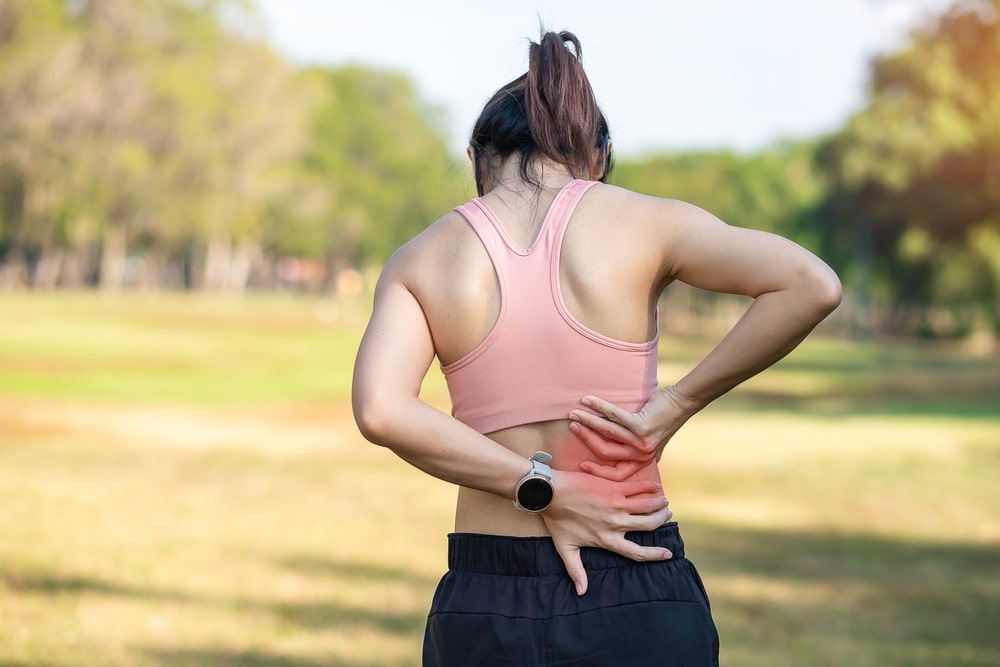Osteoarthrosis (arthritis)
Osteoarthrosis (degenerative joint disease) is the most common form of arthritis. It is characterised by progressive wearing away of the smooth, white joint surface cartilage.
Symptoms commonly include knee pain and stiffness (loss of normal movement). Stiffness, swelling, redness, and warmth may indicate inflammation of the knee joint. With more severe arthritis, the knee joint may also become deformed, leading to either a bow- legged or knock-kneed appearance.
Osteoarthrosis of the knee typically affects older people. While the symptoms tend to increase in severity as the condition progresses, they can also vary greatly from day to day. Some people find changes in the weather can significantly affect their symptoms.
Meniscal tears
The meniscus is a cartilage disc that forms a shock-absorber between the femur and tibia, forming the knee joint. A meniscus tear (torn cartilage) is common knee injury. On tearing a meniscus, you may feel a sharp, intense knee pain and a ‘”popping’”” sensation.
A meniscal tear is often associated with knee locking (an inability to straighten the knee) or a feeling of instability in the knee. Symptoms may include swelling and warmth in the knee.
Activities that require you to forcefully twist or rotate your knee, can lead to a torn meniscus. There is also a greater chance with aging and cartilage degeneration. The treatment of meniscal tears depends on various factors and not all meniscal injuries need surgery. Small tears located at the outer edge of the meniscus may heal on their own. However, larger tears and those located toward the centre of the meniscus very rarely heal as the blood supply to that area is poor. These will usually require arthroscopic key hole surgery, to address the problem.
Knee ligament injuries
Ligaments within the centre of the knee (cruciate ligaments) and on the inner and outer sides of the knee (collateral ligaments) are strong bands of connective fibrous tissue, that connect the shin bone (tibia) to the thigh bone (femur) and stabilise the knee. Tears or stretches of the ligaments will be felt as immediate pain.
Knee ligament pain is usually increased by bending the knee, putting weight on the knee, or walking. Ligament injuries are initially treated with ice packs, rest and elevation. Different types of ligament injuries include:
- Anterior cruciate ligament injuries (ACL) An ACL tear is a very common injury to one of the major ligaments of the knee joint. Individuals who injure their ACL often experience knee instability and swelling. The swelling is usually quite large, and occurs rapidly. An ACL tear is a very significant knee injury, and many patients opt to have surgical treatment of this injury.
- Medial collateral ligament injuries (MCL) The MCL spans the distance from the end of the femur to the top of the tibia, on the inner aspect of the knee joint. The MCL is usually injured when the outside of the knee joint is struck. MCL injuries are graded on a scale of I to III depending on their severity.
- Posterior cruciate ligament injuries (PCL) A PCL injury is an uncommon knee injury. Symptoms are similar to ACL tears, including instability and swelling. Most PCL tears occur in association with other knee ligament injuries; mainly ACL ruptures. X-rays and MRIs can help clarify the diagnosis and detect any other ligament injuries or cartilage damage. PCL tears are graded by the severity of injury, grade I through III.
Articular cartilage damage
Knee Articular Cartilage damage or hyaline cartilage is an extremely smooth, firm material, which lies on the surface of the bones between each joint. It allows the smooth interaction of these bones. The unique nature of this material, however, also makes it particularly vulnerable once it becomes damaged.
Articular cartilage damage can occur as a result of sports related trauma, the degenerative ‘wear and tear’ of bones (osteoarthritis) or other specific joint diseases., Articular cartilage has no nerves nor blood supply, which means that cartilage cannot usually undergo effective repair.
Damage may not be felt until the cartilage covering wears down to bare underlying bone. Bone is very sensitive and the sharp pain of arthritis often comes from irritation of bone nerve endings.
In addition, pieces of joint surface cartilage can break off inside the knee. These ‘loose bodies’ can cause knee pain, swelling, locking and intermittent giving way of the knee.
Treatment of articular cartilage damage is available using a range of arthroscopic surgery (keyhole surgery) techniques.
Tendonitis
Tendonitis (also called tendinitis) is the inflammation, irritation, and swelling of a tendon, which is the fibrous structure that joins muscle to bone. In many cases, degeneration of the tendon (tendonosis) is also present. Tendonitis can be caused by severe injury, but more often it is caused by repetitive minor injuries to the affected area.
In certain conditions, such as rheumatoid arthritis, gout, psoriatic arthritis, thyroid disease or diabetes, tendonitis can occur without any injury. Tendonitis can also result from aging, as the tendon loses elasticity.
Pain from knee tendonitis is usually felt in one particular area of the knee joint, often as a burning pain that is aggravated by exercise. Symptoms usually improve with physiotherapy and rest. If your knee tendonitis is caused by overuse, you may need to change your work habits to prevent a recurrence of the problem. Rarely, surgery is needed to physically remove the inflammatory tissue from around the tendon.
Knee dislocation
A knee dislocation is a very severe and rare injury, which occurs when the end of the thigh bone (tibia) completely loses contact with the top of the shin bone (femur). Dislocated knees result from high-impact car accidents, severe falls and sports injuries.
If you dislocate your knee, the ligaments of the knee will be torn, usually including the anterior cruciate ligament (ACL) and posterior cruciate ligament (PCL). The collateral ligaments, cartilage and meniscus can also be damaged. Some knee dislocations may damage the important nerve and vascular structures around the knee. If these vascular injuries are severe, your leg may require emergency vascular surgery to .reconstruct all the damaged structures within and around the knee joint.. A knee dislocation may be confused with a kneecap dislocation (patellar dislocation), which is explained below.
Our knee surgeons at London Bridge Orthopaedics have particular expertise in dealing with these rare, but very complex knee injuries.
Patellar disclocation (kneecap dislocation)
A kneecap dislocation (patellar dislocation) and a knee dislocation are two different types of injuries. While both injuries are severe, a patellar dislocation occurs much more commonly than a knee dislocation (described above) and is a much milder injury.
Normally, the kneecap (patellar) slides centrally up and down a groove on the end of the femur, as the knee bends. This groove is called the trochlea. Patients who experience an unstable kneecap have a patella that does not slide centrally within this groove, and may be pulled more towards one side. This results in a partial dislocation of the kneecap – known as a patellar subluxation.
Depending on its severity, this improper tracking may not cause the patient any problems or it may lead to complete patellar dislocation – where the kneecap fully dislocates out of the groove and the front of the thigh bone.
After a patellar subluxation, the kneecap will often ‘slip’ back into position on the trochlea. However, patellar dislocation will usually be corrected using physiotherapy and may sometimes require surgery.
Knee bursitis
Knee bursitis (prepatellar bursitis), also known as “housemaid’s knee”, is a common cause of swelling and pain on top of the kneecap. Symptoms also include limited motion of the knee and painful movement of the knee. These symptoms are usually aggravated by kneeling, or going up and down stairs.
Swelling of knee bursitis occurs within the bursa, not the knee joint itself. A bursa is a thin sack filled with the body’s own natural lubricating fluid, which cushions the knee, and allows muscles, tendons and skin to slide smoothly over bony surfaces.
While the bursa is normally very thin, it can become inflamed and irritated, leading to bursitis. If the inflammation is associated with trauma and a break in the skin, the bursa can become infected.
As well as avoiding activities that increase knee bursitis, treatment may include drainage of the bursa, using a needle and a syringe. This is carried out in the consulting room. The fluid can then be analysed to detect infection.
If the swelling continues, then excising (removing) the bursa may be considered. This procedure is performed as an outpatient in the operating room.




